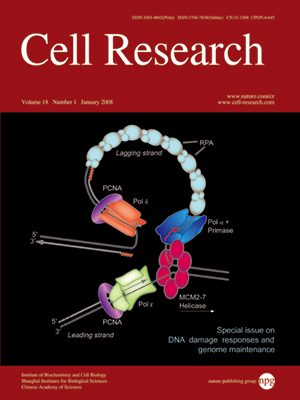
Volume 18, No 1, Jan 2008
ISSN: 1001-0602
EISSN: 1748-7838 2018
impact factor 17.848*
(Clarivate Analytics, 2019)
Volume 18 Issue 1, January 2008: 198-213
REVIEWS
Features of trinucleotide repeat instability in vivo
Irina V Kovtun1 and Cynthia T McMurray1
1Department of Molecular Pharmacology and Experimental Therapeutics, Mayo Clinic, Rochester, 200 First Street, SW, Rochester, MN 55905, USA
Correspondence: Irina V Kovtun(kovtun.irina@mayo.edu )
Unstable repeats are associated with various types of cancer and have been implicated in more than 40 neurodegenerative disorders. Trinucleotide repeats are located in non-coding and coding regions of the genome. Studies of bacteria, yeast, mice and man have helped to unravel some features of the mechanism of trinucleotide expansion. Looped DNA structures comprising trinucleotide repeats are processed during replication and/or repair to generate deletions or expansions. Most in vivo data are consistent with a model in which expansion and deletion occur by different mechanisms. In mammals, microsatellite instability is complex and appears to be influenced by genetic, epigenetic and developmental factors.
Cell Research (2008) 18:198-213. doi: 10.1038/cr.2008.5; published online 1 January 2008
FULL TEXT | PDF
Browse 1840


